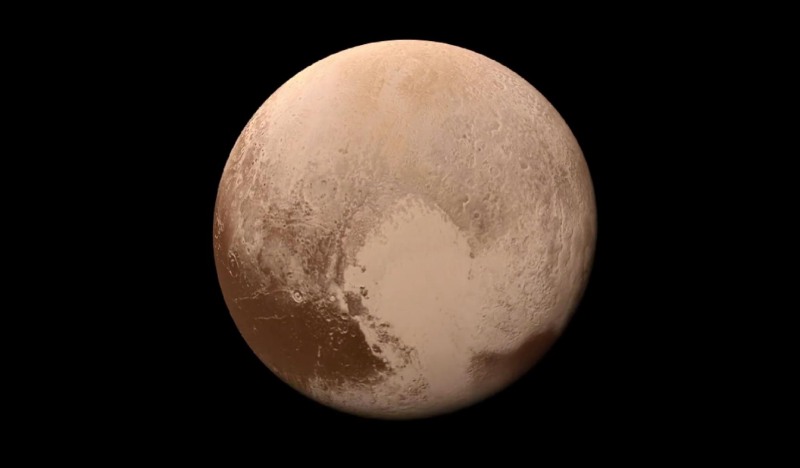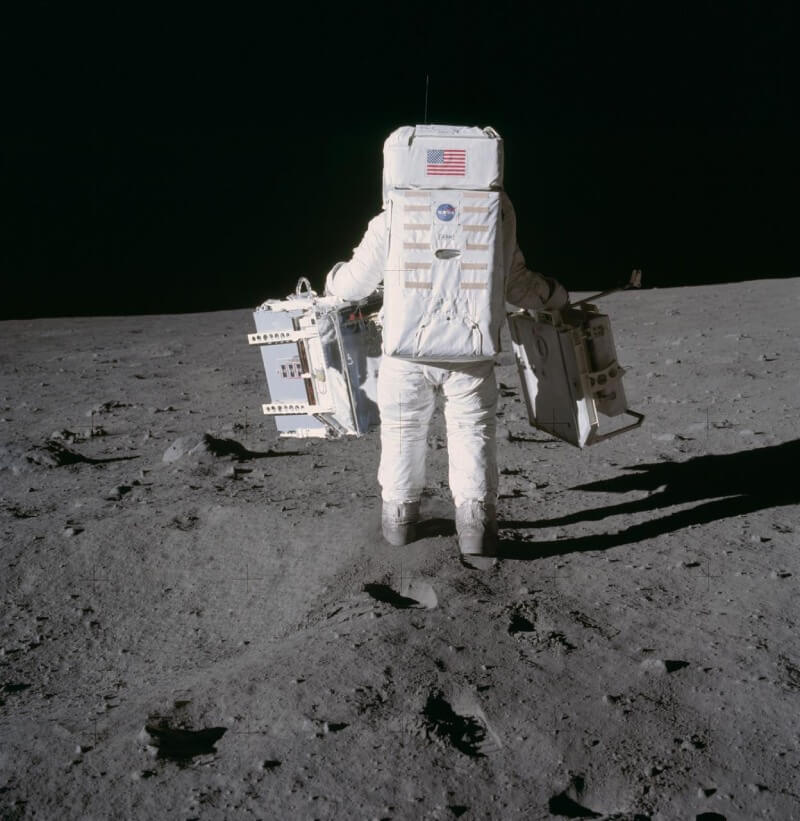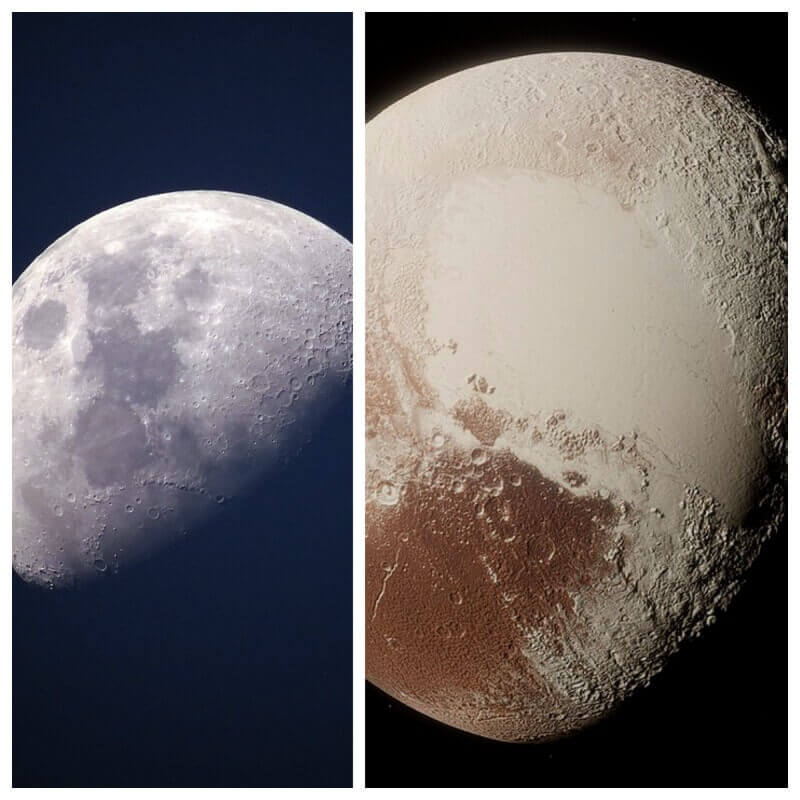Pluto and the Moon are two vastly different cosmetic objects, but their aesthetic similarities are enough for the two to be compared constantly. One is a dwarf planet, most of the time, and the other is a natural satellite.
It doesn’t seem like there would be many similarities to compare, but there are actually quite a few things. The biggest thing Pluto and the Moon have in common is their thin atmosphere and their size.
What Are The Differences Between The Moon and Pluto?
We already know that Pluto is a dwarf planet while the Moon is a natural satellite. The Moon is located in Earth’s orbit, 150 million km away from the Sun. Pluto is located in the Kuiper Belt, 5.9 billion km away from the Sun.
Due to the atmosphere of the Moon and its proximity to the Sun, the temperature fluctuates erratically. Pluto, on the other hand, tends to keep a steady -240 °C.

It takes the Moon 29 and a half days to orbit around the Earth, but for Pluto, it takes 366.7 days to orbit around the Sun. That’s an incredible difference!
The Moon’s core is composed of iron, while Pluto’s core is composed of silicate. Even their atmospheres are extremely different! The Moon’s atmosphere is composed of argon, helium, and neon. Pluto’s atmosphere is composed of nitrogen, methane, and carbon dioxide.
The Moon and Pluto really don’t seem all that similar. They have different cores and atmospheres and are so far away from each other that it just doesn’t seem plausible for there to be any similarities other than color!
What Do The Moon and Pluto Have In Common?
Scientists and astronomers believe that the Moon and Pluto formed approximately 4.6 billion years ago, leaving them with similar formation ages.
While their atmospheres are composed of different compounds, they both have extremely low density.
With the help of spacesuits, humans could walk on both the Moon and Pluto because of their solid, rocky surfaces.

Both are tidally locked to another object. The Moon is locked onto Earth and Pluto is locked on its Moon, Charon. When objects are tidally locked, this means you’ll only see one side of the surface. Humans only see one side of the Moon and if there was anything or anyone on Charon, they’d only see one side of Pluto’s surface.
How Big Is Pluto Compared To The Moon?
The Moon is actually far bigger than Pluto – bigger than what you’d expect. With all of these differences and similarities, it would make sense for the two cosmic objects to be the same size, right? Well, the radius of the Moon is 1,737 km, a whole 549 km larger than Pluto! That’s a pretty big size difference when comparing the two side by side. In the grand scheme of things, however, that’s not a huge difference after all.
To put it in context, Earth is four times the size of the Moon, and Jupiter, the biggest planet in our solar system, is ten times the size of Earth!
Pluto’s radius is approximately 1,188 km. This means that Pluto is 1/16th the size of Earth, an even smaller fraction than that of the Moon.
Pluto and the Moon share a few similarities, but size isn’t one of those. They may seem very close in size, but 549 km makes a huge difference, especially when compared to Earth or other planets.
Conclusion
Although the Moon and Pluto have their fair share of similarities, they differ in a lot of ways, from their differences in size, temperature, and more. At the end of the day, the Moon is a natural satellite, whilst the other is an on again, off again dwarf planet with natural satellites of its own. The Moon and Pluto really aren’t all that similar and should be thought of differently, especially when comparing cosmic objects together.

